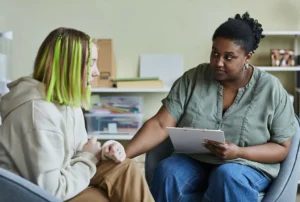
According to the Pew Research Center, as of 2019, about 41 percent of people over-65 population do not have wireless broadband access at home. That works out to about 22 million people out of 56 million. Of course, many of these 22 million may have slower connections or can access the internet through their phones. But even if the physical barriers are removed, a lack of computer training can be yet another barrier.
For over 15 years, Senior Planet and its parent organization Older Adults Technology Services (OATS) have tackled that barrier, helping seniors learn to make better use of computer technology so they can improve their quality of life in the digital age.
In 2018, OATS had over 30,000 class participants and was confident in its ability to help older people make more effective use of computer technology. However, with physical distancing and this population at high risk from the pandemic, the number of older adults who need to learn computer skills has grown significantly, especially as many social activities and events have become exclusively available online.
Jolynn Bailey, a 67-year-old retired teacher in Clifton, Texas, was one of many who were hesitant to invest in boosting their computer skills. Although she used a computer for school and to log on to the Weight Watchers website, she still found herself at a loss when the pandemic left her alone in a studio apartment, unable to watch television or meet up with friends.
But Bailey was persuaded by her daughter to take a course offered by Senior Planet. Bailey paints a perfect example as to why the class “How to Use Zoom,” which was offered in the beginning of the pandemic, attracted more than 10,000 participants according to Tom Kamber, executive director of OATS. Bailey has since been able to join yoga classes, take part in a book club, and learn how to connect her computer to the television. Bailey adds, “It gave me my world back, and more than that, a whole new world.” Now, she even participates in Senior Planet discussion groups where she’s met people from across the country and participates regularly in workshops.
Helping seniors connect amid the physical distancing of the pandemic can boost mental health, which is one huge benefit of helping older Americans gain computer skills and access. But the importance of broadband access amid the pandemic extends beyond that. A report from OATS and Humana notes that the gap in “digital connectivity among older adults is a public health and social justice crisis.”
Sign up for our free newsletters
Subscribe to NPQ's newsletters to have our top stories delivered directly to your inbox.
By signing up, you agree to our privacy policy and terms of use, and to receive messages from NPQ and our partners.
In the US, over 80 percent of COVID-19 fatalities have been among Americans who are age 65 and older. As the report authors point out, “It is disheartening to know that, based on our research, approximately 40 percent of them likely lacked the technology resources for communication, social support, health information, and financial management that were essential for so many others during this terrible time.”
In response, OATS and the Humana Foundation are launching a national campaign called Aging Connected to bring broadband to at least one million American seniors by 2022. Other organizations have also been stepping up across the country. GetSetUp, for example, is a site that offers a variety of technology tutorials specifically for seniors; from courses on how to use social media sites to virtually refilling prescriptions or ordering grocery delivery.
“All of our classes are taught by older adults themselves,” explains Judy Stelling, a guide for GetSetUp. “So, there is a relatable factor there when you have an older person teaching another older person.”
But even as nonprofits mobilize to fill the gap, the data make clear that there remains, as the report puts it, “a connectivity crisis of enormous magnitude and severity in social consequence.” It is also clear this crisis is not evenly distributed among all older Americans. As the report authors point out, the lack of home broadband correlates “strongly with virtually all major categories of socioeconomic inequality. If you are over 65 and lack a high school diploma, live in poverty, are non-white or foreign-born, live alone, suffer from poor health or physical disability, are female, or live in a rural area, then digital privation is likely added to any burden you endure.”
What can be done? The authors list a number of recommendations to extend services to those who lack access and to build computer skills in those who have access but don’t use it. Most fundamentally, the authors call for increased investment in “targeted strategies that can effectively extend the benefits of broadband connectivity to the underserved community of seniors.”—Deidre Osei











